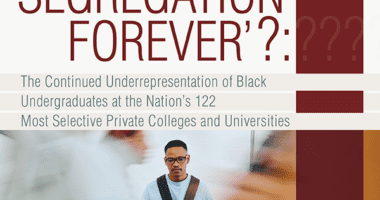Need-Blind Is Just Like Colorblind: Why Low-income Kids Should Receive Preferential Consideration in College Admissions
Need-blind college admissions processes evaluate applicants solely based on a broadly defined definition of merit (wink wink), detaching information on students’ financial need from the application review and final admission decision. Since need-blind colleges, particularly those that meet students’ full financial need, never reject a prospective student because of an inability to pay, this process is often considered the gold standard in college admissions.
In reality, it is more like fool’s gold.
By not considering financial need, these processes (albeit well-intentioned) ignore the impact of socioeconomic class in the same way colorblind policies marginalize the impact that race has on the everyday experiences and life outcomes for people of color. When people fail to acknowledge, recognize, and consider race, they also overlook the historical and current disadvantages that affect the lives of folks with darker skin tones. For example: If we don’t see race, how can we address race-based inequalities in health, life-expectancy, poverty, unemployment, pay, and educational access and attainment? Ignoring these realities solves nothing; policy remedies are required. Similarly, it is equally as unproductive to ignore the disadvantages that accompany socioeconomic status.
Now, we must admit that money isn’t everything, but in 1997, Diddy (then Puff Daddy) wasn’t too far off the mark when he proclaimed it was “All About the Benjamins,” especially when it comes to education. If a family has access to financial capital and feels inclined, they can usually get their children the best education money can buy. If they aren’t filthy rich but can afford a nice home in a middle-class neighborhood, their children will still likely attend a decent school. However, if they are poor, well … their children will likely attend K-12 schools that have fewer resources, less experienced teachers, lower curricular rigor, and limited academic options.
These systemic inequalities, compounded throughout years of schooling, restrict low-income kids’ capacity to develop an academic profile that would rival that of a peer from a more affluent background. While intended to be helpful, need-blind processes further disadvantage students from low-income and working-class family backgrounds by overlooking the barriers they faced prior to submitting their college applications. This is why preferential consideration should be provided to students from lower socioeconomic means.
If you look at many of the colleges and universities that have need-blind admissions policies and meet full financial need (it’s a small list), you will notice several trends: a) They are usually well-resourced and considered elite, and b) they enroll very few students from low-income and working-class backgrounds (we refer to these institutions as “engines of inequality”). The latter could change if these institutions gave preferential consideration to students from lower income brackets AND maintained their commitments to meeting students’ full financial need while never rejecting applicants because they can’t pay. Such an approach would make these elite institutions engines of social change instead of engines of inequality.










